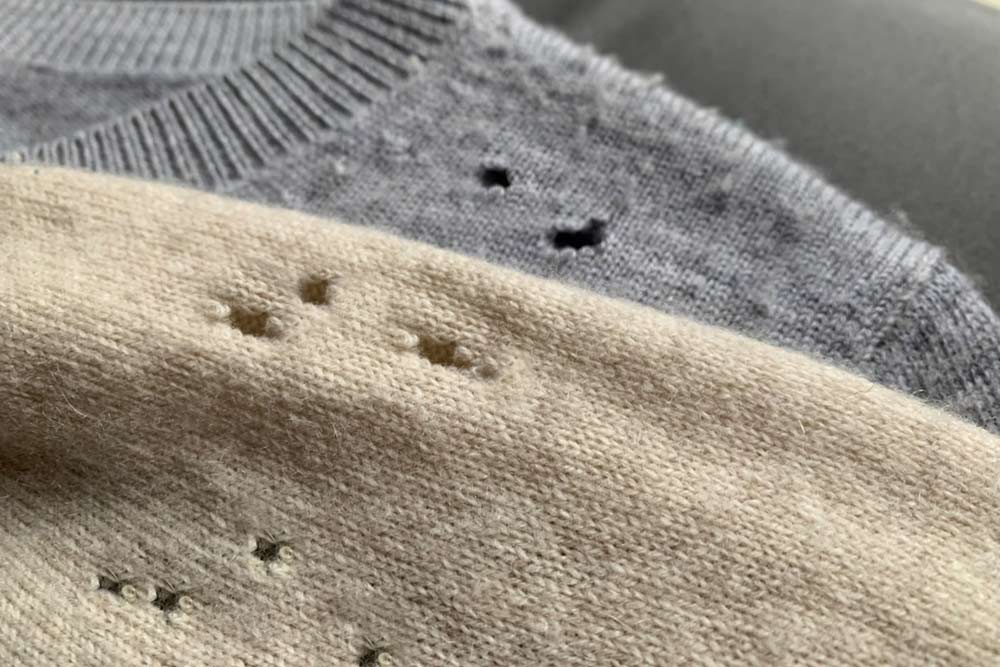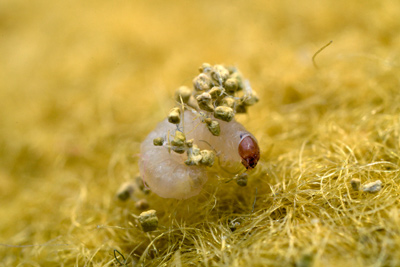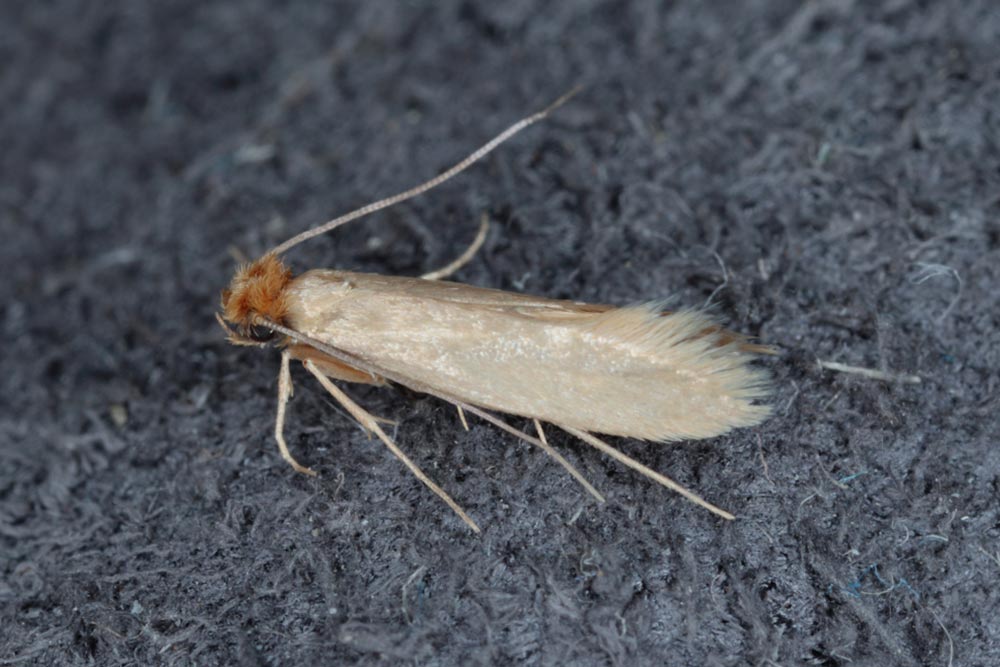What Are Clothes Moths?
Clothes moths are a common pest that can damage clothing, carpets, and other fabrics. They are a frequent problem in many households and can wreak havoc in your wardrobe. Clothes moths feed on natural fibres, leaving behind holes in your possessions. If you suspect you have cloth moths, it is essential to take action promptly to get rid of them.
Clothes moths are small, light brown moths. Their body is just 7 mm long and a wingspan of 12 mm. The larvae especially love to feed on woolen jumpers, but they will cause damage to just about any natural fibers, especially animal derived products such as silk, leather, and fur. However, it’s not the adult clothes moths you need to worry about, but the larvae. The adult moths only live for around two or three weeks, and during that time, do not eat at all. It’s the nearly undetectable clothes moths larvae that are destroying your clothing.
- WHERE ARE THEY HIDING?
- WHAT ARE THE SIGNS OF INFESTATION?
The female cloth moths will lay egg clusters in your clothing and they are especially attracted to warm, dark, humid places. They also like unwashed clothes, especially clothes that have body oil and food stains. That could make your laundry basket a hot spot.
Typically cloths moths eggs hatch in around a week, and the larvae will immediately begin to on your wool clothing. From that point, they will remain as larvae for at least one month, before the pupal stage is reached. Then they will spin a cocoon, and in 10 to 50 days, they will emerge as an adult moth.
The first sign of clothes moths you might notice are holes in your clothing. You may also spot an adult moth fluttering about. However, the eggs and larvae are tiny, and you’re unlikely to see them. Unfortunately, by the time you notice the signs, it may be too late.
How To Control Clothes Moths?
Controlling a clothes moth infestation requires a strategic and systematic approach. The initial step towards control involves ensuring that the pests you’re dealing with are indeed clothes moths and then identifying the source of the infestation. It is usually a dark, undisturbed area where the moths can breed and feast on fabric materials.
Once you identify the source, you must thoroughly clean it to eliminate eggs and larvae. Regular vacuuming can help remove any moth eggs from carpets and soft furnishings. It’s also advisable to wash all suspected infested clothing and linens in hot water or have them professionally cleaned.
Consider using pheromone traps. These traps attract male clothes moths, disrupting the breeding cycle. It’s important to remember that these traps are not a standalone solution, and you should be using them combined with thorough cleaning measures.
As a preventative measure, store clothing in airtight containers when not in use and regularly inspect these areas for signs of moth activity. Cedar blocks or mothballs are also excellent deterrents. However, remember that these alone will not control an existing infestation.
Controlling a clothes moth infestation requires a multifaceted approach of regular cleaning, targeted treatment, and preventative measures. Taking control of the infestation may take some time, but you can achieve it with persistence and vigilance. For more severe infestations, consider using a professional pest control service to make sure any hidden larvae are treated and dead.







